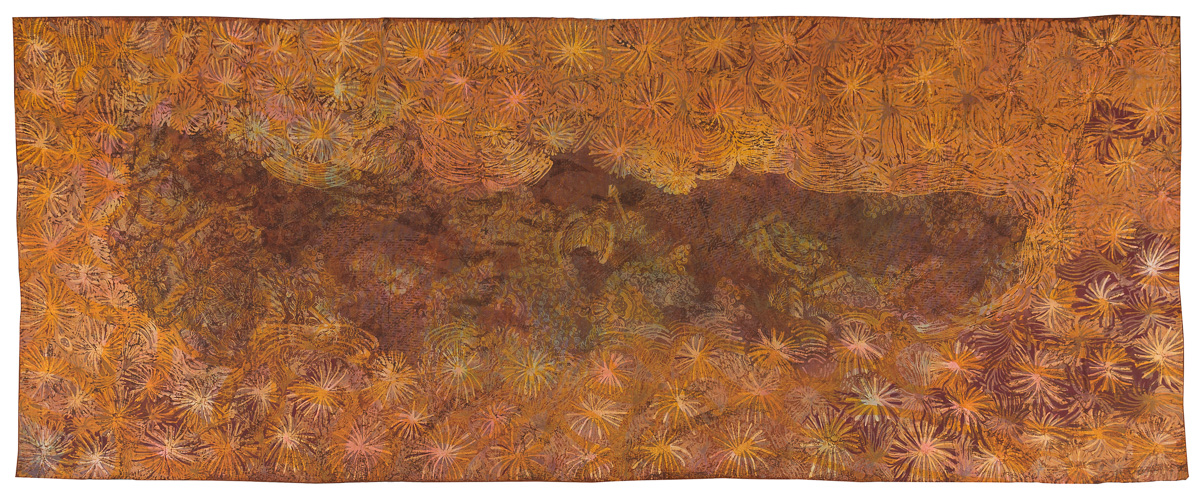Cahaya (light)
Artists of Utopia Collaborative

Details
- Artist
- Artists of Utopia Collaborative
- Title
- Cahaya (light)
- Year
- 1999
- Medium
- batik on silk
- Size
- 283 x 114 cm
- Details
verso: Urapuntja Artists Utopia, Utopia, N.T.
© Agus Ismoyo & Nia Fliam on behalf of Brahma Tirta Sari Studio
- Stock Number
- 210121
Sold This artwork has been sold. Please contact us for similar artworks.
Acquired by National Gallery of Australia.
Provenance
the artists
Exhibited
Probably, The 3rd Asia Pacific Triennial of Contemporary Art, Queensland Art Gallery, 9 Sep 1999–26 Jan 2000
Further Information
A collaboration between Agus Ismoyo and Nia Fliam from the Studio Brahma Sirta Sari, in Yogyakarta, Java and artists from Utopia, who came together in Alice Springs in 1999 to work on a series of batiks which were exhibited at the 3rd Asia Pacific Triennial of Contemporary Art. The artists had met five years earlier when a group of women from Utopia travelled to Indonesia to study batik. Created using the more traditional handwork as well as the cap technique, designs from Utopia were faxed to Java where they were translated to metal stamps.
“We’ve still got our Law, and all of us with the Law got together to make batik. Those two [Nia and Ismoyo] brought their things from the north so that we could get together. Our things have Law and theirs are the same; they have Law as well. Theirs comes from the land, and ours comes from the land as well. Everybody comes and gathers together for ceremony. People come from all over the place. In the same way, we are getting together to make batik.”
Violet Petyarr, Desart, Putting in the Colour: Contemporary Aboriginal Textiles, Jukurrpa Books, Alice Springs, 2000, p. 69
“It is of great interest that the ancient technique of batik should find its way to the remote desert of Australia and that these artists could be interested in it and use it as a part of their creative life. This shows that traditional culture is alive and can develop in new forms and spaces with unlimited possibilities.“ Agus and Nia Ismoyo, 2005
